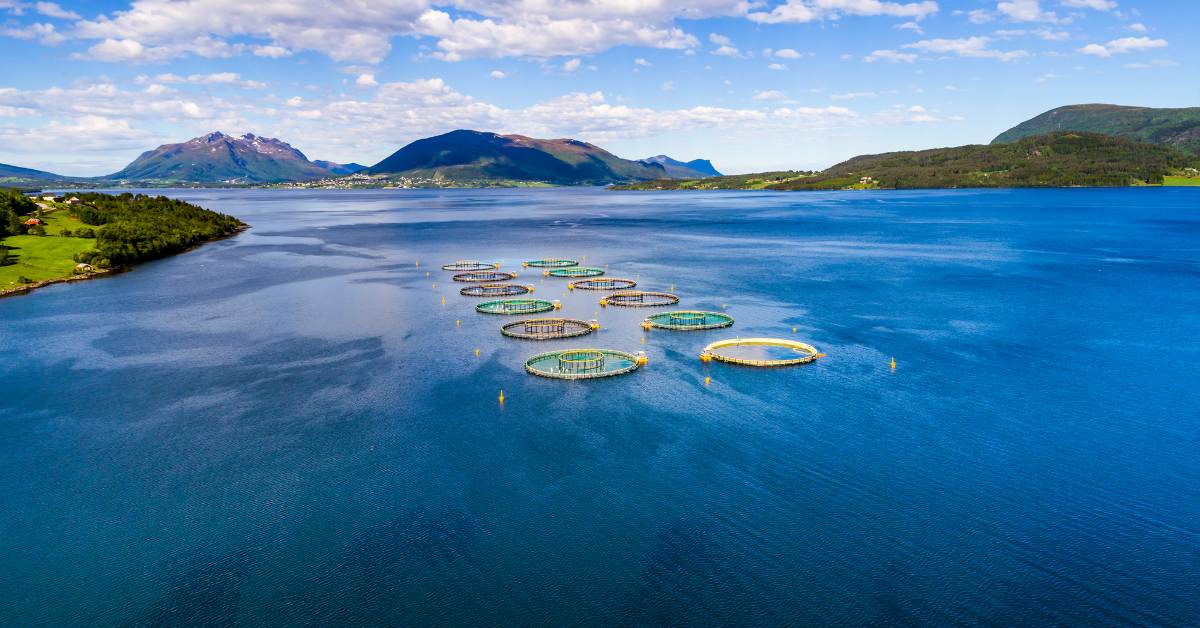The regional impacts of salmon farming has caused some discussion. As a relatively new and growing sustainable solution to food production, salmon ocean farming has been the subject of intensive environmental assessments, nearly always coming out on the positive side of the debate.
No matter how you look at it, the impact of salmon farming on the regional economy is significant. In addition to creating jobs in the local area, salmon farming also results in increased spending and tax revenue.
Salmon Farming Regional Impacts
Salmon farming ocean sites occupy a tiny portion of the coastal zone areas in which they are located. Most salmon farm ocean sites are located in remote areas of Maine, Chile and Canada. Salmon farming ocean sites are deliberately selected to minimize environmental, navigational and aesthetic impacts.
A rigorous permit approval process ensures these factors are considered. In Maine, for example, more than 15 authorities assess an application over a review period of two years before a site can be established.
Economic Benefits
Farming ocean sites occupy a small portion of the coastal zone areas in which they are located, but return a significant economic benefit to their respective regions.
The impact of salmon farming on the regional economy is significant. In addition to creating jobs in the local area, salmon farming also results in increased spending and tax revenue. For example, in Maine, the salmon farming industry is worth over $100 million annually. This contributes to the state’s GDP and supports over 1,000 jobs.
Chilean salmon ocean farms generate over $2.5 billion in revenue each year, and this accounts for nearly 1% of the country’s GDP. In Norway, the salmon farming industry is worth more than $6 billion, and it employs over 20,000 people.
The benefits of salmon farming extend beyond the local economy. Salmon farms also generate tax revenue for the entire country.
Ocean Salmon Farming in Maine
The Maine coast boasts 3,800 acres of fishable waters and several hundred miles of shoreline. Salmon pens exist on fewer than .003% of these acres, a fraction of the 1,275 acres occupied by pleasure boat marinas in the state.
The Maine aquaculture industry accounts for $122 million in direct sales, the majority of which come from salmon ocean farming. Sales per employee are twice the average of all other Maine businesses, and worker compensation surpasses the state average.
Ocean Salmon Farming in Canada
Canadian waters dedicated for salmon ocean farming represent less than 0.01% of the total coastal area.
The salmon aquaculture industry in New Brunswick is an integral component of the provincial economy. Production has more than doubled in the past four years, contributing to substantial employment growth in the processing sector. Full-time jobs in the same period have increased by one-third.
Salmon aquaculture is a vital industry in New Brunswick. The provincial government, through the Department of Agriculture, Aquaculture and Fisheries (DAAF), has been a strong supporter of the salmon aquaculture sector and continues to work with industry partners to make this important sector even more successful. In fact, our blog will keep you up-to-date on all things salmon aquaculture; from new research projects to exciting developments in the industry.
Ocean Salmon Farming in Chile
Chilean salmon ocean farms occupy less than one out of every 50,000 acres, or below 0.002%, of available area. Ocean salmon farming is a critical part of the Chilean economy, and it’s important to consider how changes in the industry will impact both jobs and revenue. The salmon industry has been hit hard by several external factors in recent years, but there are still opportunities for growth.
Conclusion
Salmon farming is a vital part of the regional economy, and it’s important to keep up with the latest news about this industry. Follow our blog to stay up-to-date on the latest developments in salmon farming, and how it impacts jobs, spending, and tax revenue in our region.

